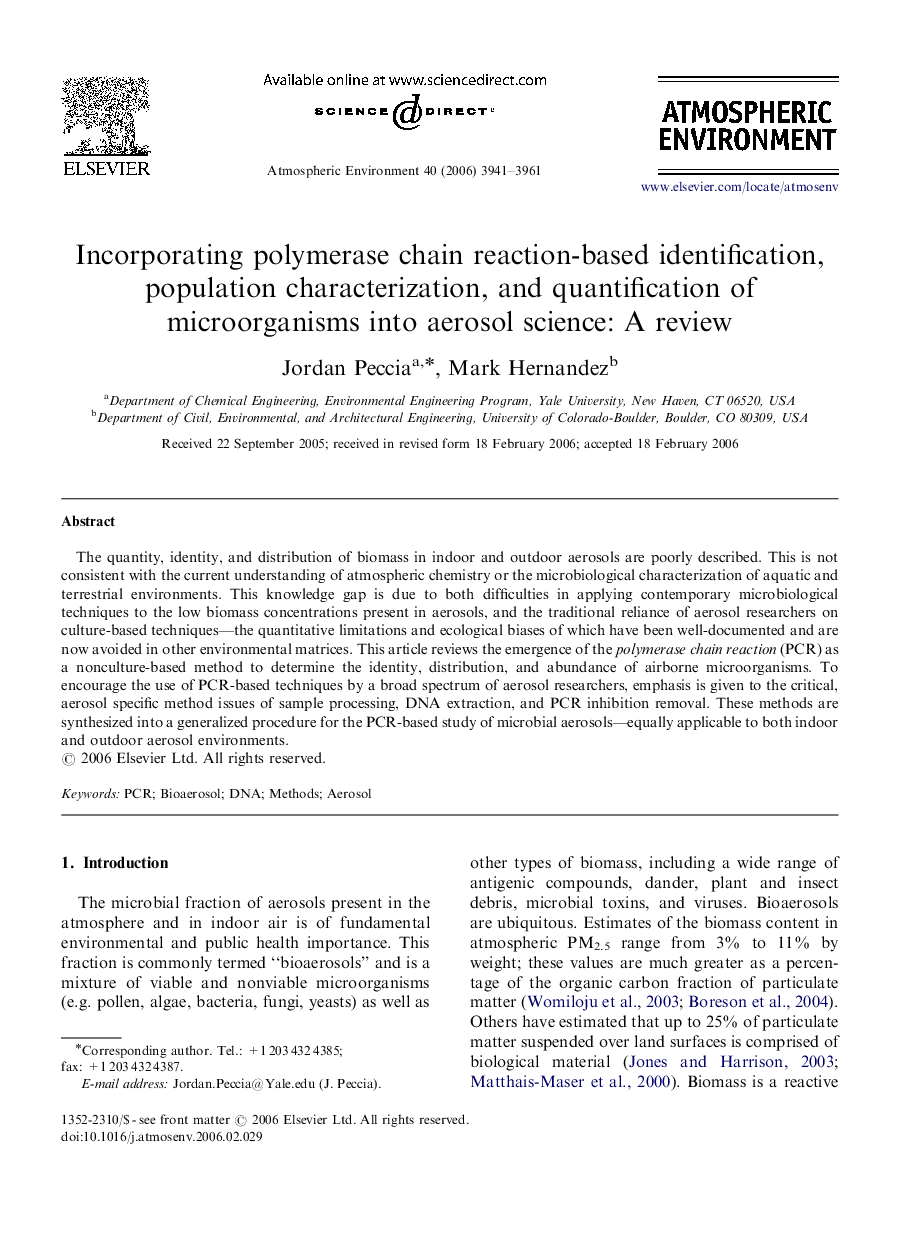| Article ID | Journal | Published Year | Pages | File Type |
|---|---|---|---|---|
| 4444606 | Atmospheric Environment | 2006 | 21 Pages |
The quantity, identity, and distribution of biomass in indoor and outdoor aerosols are poorly described. This is not consistent with the current understanding of atmospheric chemistry or the microbiological characterization of aquatic and terrestrial environments. This knowledge gap is due to both difficulties in applying contemporary microbiological techniques to the low biomass concentrations present in aerosols, and the traditional reliance of aerosol researchers on culture-based techniques—the quantitative limitations and ecological biases of which have been well-documented and are now avoided in other environmental matrices. This article reviews the emergence of the polymerase chain reaction (PCR) as a nonculture-based method to determine the identity, distribution, and abundance of airborne microorganisms. To encourage the use of PCR-based techniques by a broad spectrum of aerosol researchers, emphasis is given to the critical, aerosol specific method issues of sample processing, DNA extraction, and PCR inhibition removal. These methods are synthesized into a generalized procedure for the PCR-based study of microbial aerosols—equally applicable to both indoor and outdoor aerosol environments.
